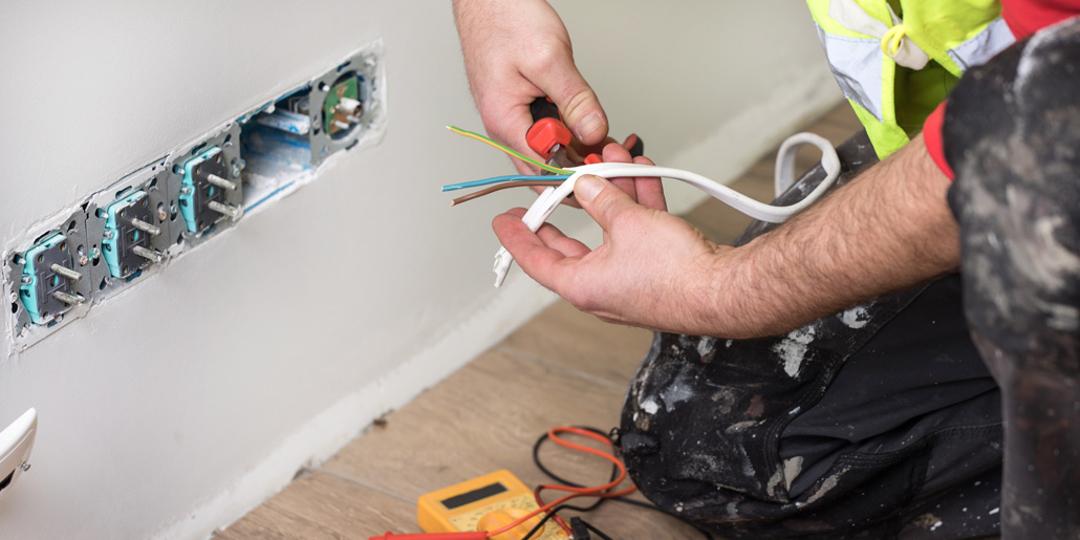Home electrical repairs and DIY upgrades can be intimidating. After all, if you’re reading this, you’re probably not an electrician. But your friends have mastered DIY electrical projects. Maybe you can too? The first step is understanding what type of wire for home electrical projects you need.
Home Electrical Basics
Your electrical system may consist of wires or cables, depending on its age and any changes to the system since it was built. There’s a distinct difference between wires and cables.
Home Electrical Wires
Electrical wires are single wires carrying electricity from one point to another. They’re generally made of copper but some types may be aluminum or a combination of both.
These wires are insulated with a non-conductive coating that’s color-coded and marked with the wire size.
Electrical wires are generally used inside of conduit when installed. These non-conductive conduits are often used in unfinished spaces, like basements, or in short runs between a junction box and outlet.
Wire sizing
Manufacturers use the American Wire Gauge (AWG) system to size electrical wires. It seems non-intuitive, but the higher the gauge size, the smaller the wire.
Most wires in a modern home electrical system are 12 or 14 gauge. However, for large appliances, you may see 10-, 8-, or 6-gauge wires. Remember, the smaller the AWG number, the thicker the wire. Large appliances like ovens, washers, and dryers require higher amperage, so they require a different wire gauge to power.
Knowing the proper wire gauge in your home is important if you’re extending the electrical service, such as adding an outlet to a room. You need to use the same gauge wire as the existing run.
If you’re not sure what you have, use loose change to determine the size. The thickness of a nickel is about the same size as 12-gauge wire, which is usually used on 20-amp circuits. A dime is about as thick as 14-gauge wire, usually used on 15-amp circuits.
Wire color coding
Unfortunately, the color coding on your home’s electrical system may not comply with current standards. Remember that ANY color wire in your home may be “hot,” so use a tester to prevent electrical shock.
However, in general:
-
White: Neutral, but sometimes converted to hot
-
Black: Hot wire for switches and outlets
-
Red: Hot wire for switch legs and hardwired smoke alarms
-
Blue and Yellow: Hot wires in conduit
-
Green (sometimes bare): Ground
Home Electrical Cables
Electrical cables contain several wires and are industry standard for interior wiring in modern homes. You may see it called non-metallic (NM) or “Romex” cable.
NM cables allow electricians to route several wires over long distances within walls from the panel to various end points, such as junction boxes and outlets.
The cable contains several wires, including one or two “hot” wires, a neutral wire, and a ground wire.
NM cable sizing
NM cable comes in several sizes and amperage capacities. You’ll often find it printed on the insulation.
It will also tell you what wires the NM cable contains. Look for the initials NM and a number separated by a dash. The first number tells you the gauge of the wires within, and the second one tells you how many are inside.
NM cable color-coding
NM cable also uses color coding to inform its use and capacity.
-
Black: 6- or 8-gauge wires / 45 or 60 amps
-
Orange: 10-gauge wire / 30 amps
-
Yellow: 12-gauge wire / 20 amps
-
White: 14-gauge wire / 15 amps
Gray NM cable
Gray NM cable is meant for underground installation or damp areas. Check the labeling on the sheath insulation to determine its size and capacity.
Other Wires and Cables
Along with the wiring powering outlets, lights, and appliances, you’ll find other types of wire when doing electrical projects.
Low-voltage wires
Low-voltage wires provide power to small devices. You’ll find these kind types of wires used on landscape lighting, doorbells, speaker systems, and sprinkler systems.
These systems use wires ranging from 22 gauge to 12 gauge. They’re commonly insulated but often carry such a low current that it’s rare to be shocked when working with them.
Other types of low-voltage wiring include old telephone and data hookups. Cat5 is the most common type of data wiring used and it carries a very small current. It’s generally safe but can carry a serious jolt if it contacts other household wiring.
Old coaxial cable, like Cat5, can also carry a charge if it contacts higher voltage wiring.
Now that you know what type of wire is used for home electrical systems, you’ll feel more confident in those DIY projects.
For professional assistance in your electrical projects, make an appointment today with the team at Mr. Sparky in Pleasantville. We’ll handle the high voltage wiring and ensure everything is up to code as well.















